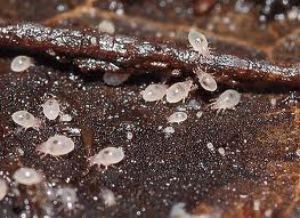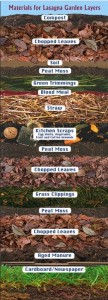Let’s make compost. It’s an earthy topic. Does it matter? Oh, yes. Bagging up organic matter and setting it out for trash is a pity — the moment it’s dumped in the landfill, it turns quickly to methane, a greenhouse gas 20-plus times more potent than CO2. And trash trucks bring tons of it to landfills every day. In 2013 alone, Americans generated about 254 million tons of trash; we recycled or composted about 87 million tons.

Which is all well and good, but we can do better. Compost encourages healthy and balanced populations of soil organisms that can suppress plant pathogens by (good IPM!)
- parasitizing them or
- out-competing them for food and water.
Bacteria, molds, mites, and more — these good guys are on your side. But what happens to that compost heap when the ground is frozen or the snow is deep?
Like biannual and perennial landscape plants, soil organisms normally go dormant in winter. Yes, you could keep adding your kitchen scraps and recyclables to the pile. But they’ll freeze in place unless you can keep the good guys active through most of the winter. And it’s not that hard.

So while it’s still fall, harvest finished compost to make room for winter compost. Then insulate the pile with bags of leaves or bales of straw. Meanwhile, if you want to cut back on trips outside, make a pre-compost bucket.
Think of it as a mini-compost bin for food scraps, old newspaper, and the like. You’ll want to mix browns and greens just like you would outside using the “lasagna method” with its alternating brown and green layers for your outdoor compost. (Think of your pre-compost bucket as the “ravioli method.”)
Best you chop those food scraps first, though. Because the good guys will slow down a tad when they get chilly, you want to make it as easy on them as you can. Smaller particle sizes give them more surface area to do their work and keep them cozier while they do it. Then come spring they’ll really rev up.
Want more info? Check out:
- ccetompkins.org/resources/compost-winter-composting — our inspiration for this post
- ccetompkins.org/resources/compost-lasagna-layer-composting
Or browse online for more:
- compostjunkie.com/Compost-blog
- compostingcouncil.org
- pinterest.com/ertf/lasagna-gardening-and-composting